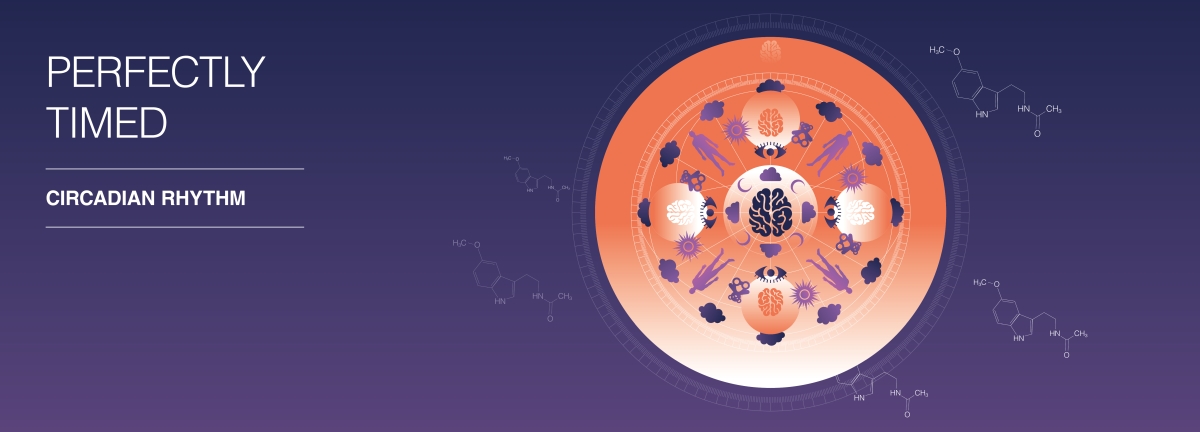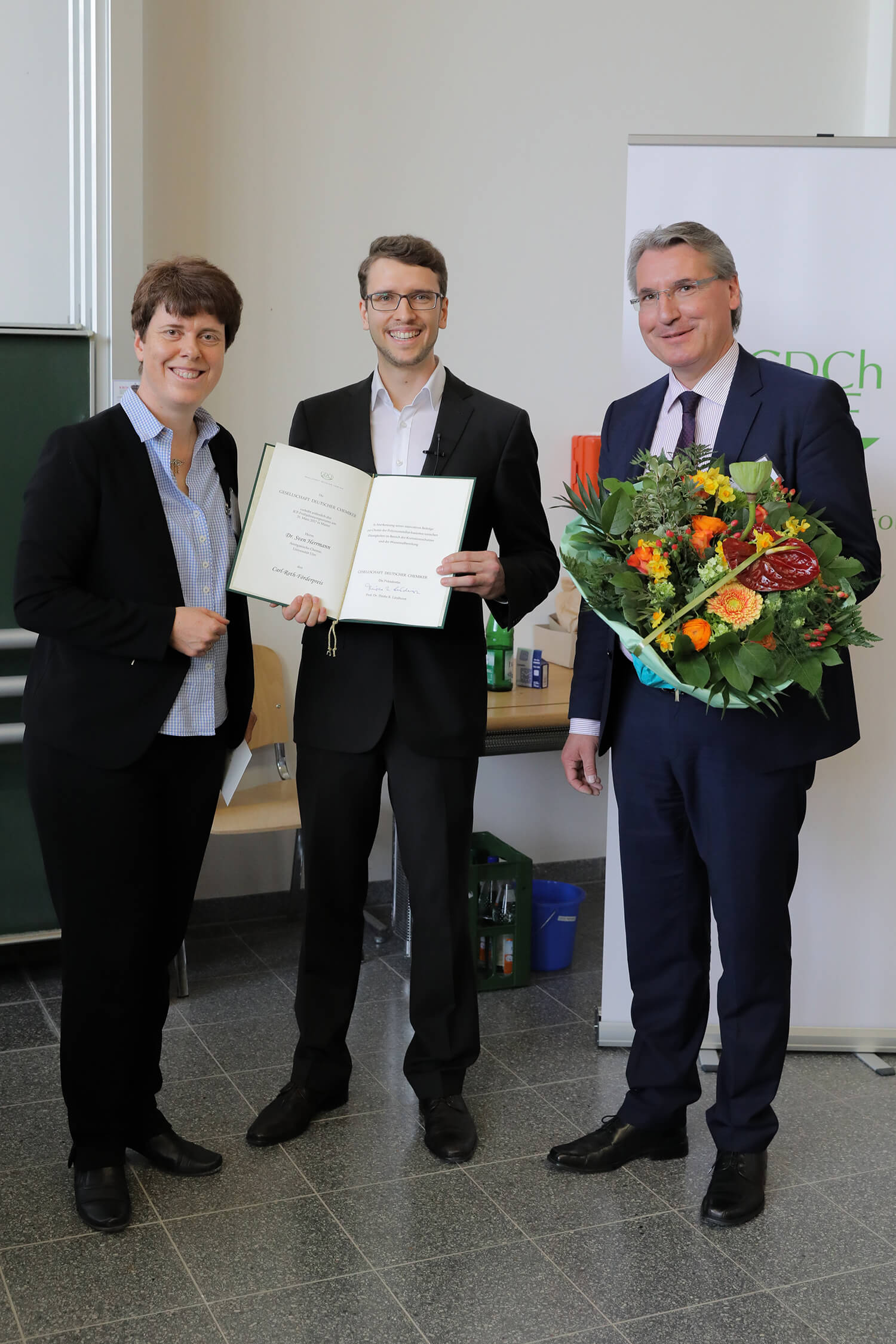
Say goodbye to the winter blues, and welcome in that spring feeling!
How the circadian rhythm influences our health and well-being
The long-awaited first signs of spring are here: Birds are returning from their wintering grounds, and daffodils and crocuses are poking their heads out of the ground. And with it, we’re all feeling a lot better: The tiredness that plagued us through the winter months seems to have disappeared, and we find ourselves full of energy again.
Darkness makes us drowsy
We often talk about having an internal “body clock” – particularly when we find ourselves waking up in the morning before our alarm’s even gone off, for example. This isn’t just a product of our imagination: Our brain does indeed have an internal clock that – in simple terms – is made up of many bundles of nerve cells. This controls the diverse biorhythms of the human body, and (day)light is its most important external point of reference.
The key “chronobiological” centre of the brain is a component of the hypothalamus called the suprachiasmatic nucleus, which plays a central role in the regulation of the circadian rhythm in mammals. Several mechanisms are involved, such as the amount of light (or darkness) perceived by the eye, as well as a self-regulated periodic protein production.
A brief excursion into the world of our Stone Age brain
In the retina of the eyes of mammals, there are special cells that contain large amounts of the light-sensitive protein melanopsin. These cells therefore detect the level of light or darkness and send afferent stimuli via the optic nerve to the aforementioned suprachiasmatic nucleus (Latin name: nucleus suprachiasmaticus). From here, the information is first directed to “sympathetic root cells” in the upper thoracic spine, and from there, via the cervical part of the sympathetic nerve back to the “ganglion cervicale superius“, one of three nerve nodes in the upper cervical region.. From here, the information is sent to the epiphysis (pineal gland), which in turn produces and releases melatonin.
In fish, amphibians, reptiles and many birds, the pineal gland, as the parietal eye, is also sensitive to light and can “detect” whether it is light or dark. Only in mammals does information travel from the eye to the brain via the chest.
Brightness suppresses the release of melatonin. This means that the darker our surroundings are, the more melatonin is produced and released by the pineal gland. This melatonin makes us feel tired and sleepy, regardless of the time of day – all because we’re not exposed to light or sun.
It’s good to know that our body can get the winter blues under control all by itself, and that our good mood will automatically return as the days get longer.
The circadian rhythm and fruit flies
Research on the circadian rhythm was already being carried out as early as the 1970s, when Seymour Benzer and his student Ronald Konopka studied the genes that control the circadian rhythm in fruit flies. Further down the line, in 2017, Jeffrey C. Hall, Michael Rosbash and Michael W. Young received the Nobel Prize in Medicine for their work on biorhythm-controlling molecules. They also conducted research on fruit flies, and found that there are proteins whose amount is periodically built up and broken down in the cells. These periodically expressed proteins exist in all forms of creatures, from fruit flies to humans. Parallel to the light/dark reception described above, in the suprachiasmatic nucleus, a rhythmic transcription of genes such as PER1, a protein of the period protein family, occurs. PER1 inhibits its own production according to the principle of negative feedback and is thus expressed in an oscillating manner over a period of approximately 25 hours.
How the light/dark information and the effect of the rhythm proteins are related is not yet entirely clear. Presumably, the processes influence each other – for example, by the light/dark information continually adjusting the (actually too long) 25-hour biorhythm. So even if we are constantly surrounded by light or darkness – such as in a Nordic winter or summer – we will still eventually feel tired or awake due to the rhythm of these period proteins.
We now know that the cells of virtually all animals, including humans, use a similar mechanism to generate circadian rhythms. A large part of our genes are regulated by this biological clock, and a carefully calibrated circadian rhythm adapts our physiology to the different phases of the day. Cortisol, blood pressure and body temperature are also controlled by the circadian rhythm.
Are you an early bird or a night owl?
We all know the types: Some people are full of energy in the morning, while others aren’t on top form until the late evening comes around. But in actual fact, more mixed forms of circadian rhythm exist, as a team of Russian researchers discovered in their sleep laboratory in 2014.
In their tests on 130 volunteers, whose 24-hour cycles were monitored, the final evaluation revealed not just two, but four clearly distinct groups. In addition to the “early birds” and “night owls”, whose activity cycles were shifted by around two hours, two other chronotypes emerged: One of these groups felt always awake and active, the second constantly weak and tired. Unofficial names for these chronotypes that have been proposed thus far include “dodo” and “swallow” – but, as other researchers have long suspected, although individual differences do exist, the average person is generally a standard “thrush” when it comes to their sleep cycle.
“Social jet lag” is also a thing
While early risers benefit from starting the day bright and awake, they can often find it difficult to meet up with friends in the evening. On the other hand, people who are more active in the evening often have problems getting to school or work on time in the morning.
Chronobiologist Till Roenneberg coined the term “social jet lag” for this phenomenon. This refers to the consequences experienced when people constantly live out of sync with their internal clock. The impacts on health are similar to those caused by jet lag, which puts strain on the body due to the time difference. Social jet lag can also lead to exhaustion, a weakened immune system, reduced reaction time, and/or a reduced ability to concentrate and remember things.
Help keep your cycle running smoothly
By maintaining a certain degree of routine and adapting our behaviour, we can ensure that our circadian rhythm runs smoothly, making us feel better in the long term.
To achieve this, it is helpful to maintain consistent sleeping and waking rhythms – even on weekends – as well as avoiding caffeine, alcohol and nicotine, and not eating large meals too late in the day. Bedrooms should be kept dark, and blue light from electronic devices should ideally be avoided in the evening. If you manage to establish a relaxing routine before going to bed, you’ll not only be on track for restful sleep, but to start the following day with a good energy level as well – thanks to your body being in sync.
Sources:
https://www.nobelprize.org/prizes/medicine/2017/press-release/
https://www.tandfonline.com/doi/full/10.3109/07420528.2012.719971





